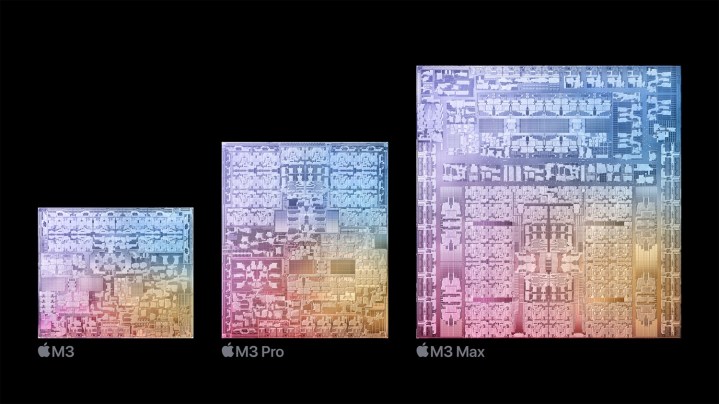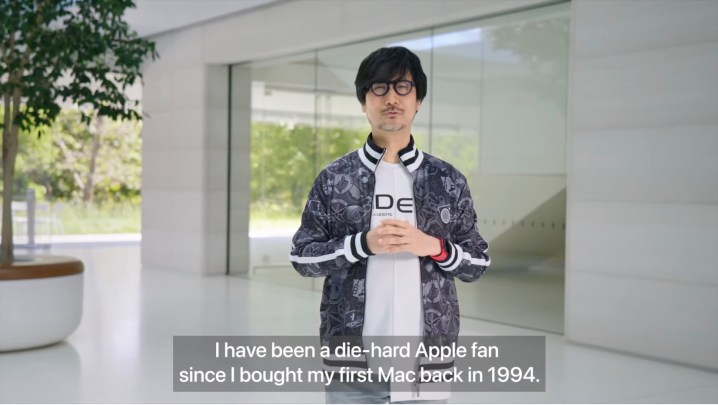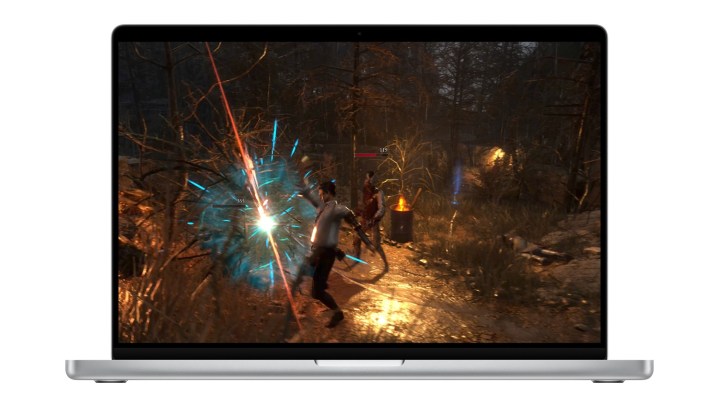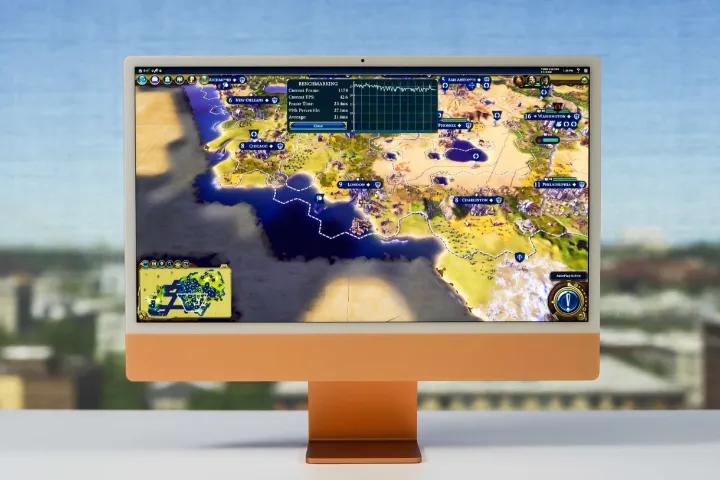Apple has finally made its mark in the world of gaming. The company today announced its new M3 family of chips at its “Scary Fast” event, and they pack redesigned GPUs that add some much-needed features for gaming in 2023. There’s just one problem — you can’t play many games on a Mac.
There are some great games available on the Mac — just check out our list of the best Mac games — but the biggest challenge for Apple is broad game support. With the release of the M3, as well as some recent developments in porting games from Windows to Mac, Apple has the opportunity to make its gaming ambitions a reality. But all that effort will be meaningless until we see the game released on those platforms alongside PC and consoles.
Game-changing GPUs

Let’s talk about what makes the M3 special for gaming. It uses a new GPU architecture that packs three key features: hardware-accelerated ray tracing, mesh shaders, and a new feature called Dynamic Caching.
Mesh shadows are somewhat new, at least as far as they appear in the game. This feature has been around for several years, enabled via DirectX 12 and dedicated GPU hardware in PCs. The first game to require mesh shading, Alan Wake Up 2, just released. Apple building support for it into the M3 is forward-looking, setting the platform up for success with future game releases.

Lastly, there’s Dynamic Caching, which is an “industry first,” according to Apple’s press release. It’s hard to know exactly what Dynamic Caching does, but it seems like a smart way to schedule work on the GPU. Most graphics cards can handle multiple tasks in parallel, but those tasks don’t always utilize the full resources available to the GPU. This feature is said to improve performance by dynamically allocating resources to increase average GPU utilization.
Apple is making a big deal about Dynamic Caching, but we’ll have to see exactly what it does once M3 devices are available. However, it is clear that the technology has done something. We saw earlier such a game Mystery And P’s lie running on an M3 MacBook Pro at speeds above 60 frames per second (fps). If this is true across all games, Apple has some capable hardware.
Tidal wave

The M3 is the result of a foundation that Apple has been building for about a year. With games like Evil Residence 4 coming to the iPhone and gaming legend Hideo Kojima’s appearance at Apple’s Worldwide Developer’s Conference (WWDC) earlier this year, it’s no secret that Apple is making inroads into the world of gaming. But more than just flashy releases, Apple has built a technological foundation that allows games to run on the Mac.
Most of it centers on the Game Porting Toolkit. Released without much complaint at WWDC this year, the software essentially creates a Windows emulation environment on the Mac. This is something third parties have been trying to solve for years. Apple claims developers can see how their games will run on Apple silicon in minutes, rather than spending weeks on development work to even consider porting to the Mac.
It’s also done a lot of work. I’m trying to get Halo Master Chief Collection runs on MacBooks with it, and the popular CrossOver app has been able to enable support for DirectX 12 games since its release. We’ve yet to see the full benefit of the Game Porting Toolkit, and I suspect it will play a major role in greater Mac support in the future.
Additionally, Apple has developed MetalFX. As we’ve seen over the past year, upscaling tools like Nvidia’s Deep Learning Super Sampling (DLSS) and AMD’s FidelityFX Super Resolution (FSR) are essential for running demanding games on most rigs. Apple has its own take on this with MetalFX, which looked really good when we demoed it Village of Evil Residents. This is the same technology that makes it possible Evil Residence 4 on iPhone; that’s a big deal.
MetalFX and Game Porting Toolkit now meet M3, which packs ray tracing, mesh shaders, and Dynamic Caching. The hardware and ecosystem are ready — all we need is the game.
We need more matches

The only problem with Mac gaming now is game support. This has certainly been a problem in the past, but it is a problem in addition to the lack of dedicated hardware and software. We need to see more games with Mac native versions, and I’m sure we will. But that won’t happen any time soon.
If you look at any year in gaming, most releases won’t see a native Mac port. There are exceptions such as Civilization VI And Village of Evil Residents, along with indie darlings like Hollow Knight And Hell. But if you look at the total number of games released on PC, only a small portion of them are coming to Mac in an official capacity.
This isn’t an easy problem for Apple to solve, and we’ve seen the company stumble over the past year. A good example is Death Stranding. Apple made a big splash when the game was brought to the Mac earlier this year, and it’s great to see such a high-profile release get an official port. However, this happened almost four years after the game was first released. Likewise with looking at similar games Village of Evil Residents And Evil Residence 4 entering the Apple ecosystem is great, but it will be much more interesting to play these games when they are released for everyone else.
Apple is playing from behind, likely seeking deals with developers to bring games to its platform. However, the big push in gaming won’t come to fruition until we see new games released on Mac alongside PC. These days, any AAA game released on the Mac feels like a novelty. For the Mac to become a true gaming destination, game releases need to feel like a regular occurrence.

It seems some of them are already starting to work. Titles like P’s lie And Baldur’s Gate 3 was released on Mac this year around the same time as Windows, and those are two great games. For Mac games to work, Apple needs to take advantage of releases like this by working with developers before release to guarantee native Mac versions on release day.
Hopefully that has happened. It’s no coincidence that the Resident Evil franchise has featured heavily in Apple’s gaming initiatives, and there’s a good chance Apple is developing a relationship with developer Capcom to bring the game to the table soon. Likewise with ports like Death Stranding It may not seem like much, but this could be the basis for future games.
If Apple sticks with it, Mac gaming could be a great experience in the future. After all, we have the hardware to support it — we just need the games.
Editor’s Recommendations